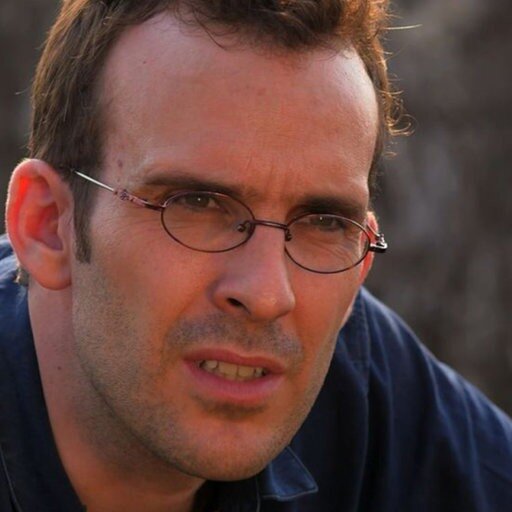Éric Bourdonneau

Historian and archaeologist Eric Bourdonneau (1973, Le Mans, France) has been working with EFEO in Cambodia since 1997.
After defending his PhD thesis Indianisation et formation de l’État en Asie du Sud-Est: retour sur trente ans d’historiographie. Matériaux pour l’étude du Cambodge ancien in 2005 (Pantheon-Sorbonne Paris I, 542 p) — his previous universitary papers were Géographie politique du Cambodge préangkorien à travers l’épigraphie du “Fou-nan” au “Tchen-la (DEA Paris III, 1997, 89 p.) and Banteay Srei, architecture et iconographie (Master Paris III, 1995, 79 p) — , he joined officially EFEO in 2007 as researcher and professor, and lectured on Ancient Cambodian history at the Faculty of Archaeology, RUFA, in 2008 – 2009. Back in France in 2010, he joined the laboratory CASE (Center for Southeast Asia, EHESS), teaching at EHESS with Pierre-Yves Manguin on SEA history and archaeology in 2012 – 2013 and, from then, at INALCO-EHESS on textual history of Cambodia with Gregory Mikaélian, Michel Antelme et Joseph Thach.
A specialist of the Koh Ker site, he also studied in-depth Banteay Srei, as well as Funan and the Mekong delta history. His research focues on Ancient Cambodia agrarian and societal organizations, and the development and renewal of social elites in Southeast Asia. Thanks to his expertise on Koh Ker sculptures, Eric Bourdonneau also played from 2015 a majour role in the identification of looted artworks from a temple in the tenth-century Khmer capital Koh Ker , leading to the restitution to Cambodia of a series of looted sculptures from museums such as the Denver Art Museum, the Norton Simon Collection in Pasadena, California, or The Met.
Eric Bourdonneau is a member of the Executive Council of CASE (EHESS), and a contributor to the EFEO research project Espace Khmer Ancien (EKA) and Corpus des Inscriptions Khmères (CIK). In August 2024, he became the director of EFEO Siem Reap.
Publications
- “Redéfinir l’originalité de Banteay Srei, la relation entre iconographie et architecture”, Aséanie 3, 1999, pp. 27 – 65.
- “The Ancient Canal System of the Mekong Delta. Preliminary Report”, dans A. Karlström et A. Källén (éd.), Fishbones and Glittering Emblems. Southeast Asian Archaeology, Stockholm, Museum of Far Eastern Antiquities, 2002, pp 257 – 270.
- “Culturalisme et historiographie du Cambodge ancien. A propos de la hiérarchie des sources de l’histoire khmère”, Moussons 7, Marseille, 2003, IRSEA-LASEMA-CNRS-Université de Provence, pp 39 – 70.
- “Réhabiliter le Funan. Óc Eo ou la première Angkor”, Bulletin de l’École française d’Extrême-Orient n° 94, Paris, EFEO, 2007, p. 111 – 158.
- [TK] [with Pierre-Yves Manguin] “Avec Pelliot, “le long de l’abîme””, in Acte du colloque Paul Pelliot, de l’histoire à la légende, Collège de France, Paris, 2 – 3 Oct. 2008, 2009.
- “Henri Marchal et la splendeur préservée du temple de Banteay Srei”, in Catalogue de l’exposition Des archéologues à Angkor, photographies de l’Ecole française d’Extrême-Orient, Paris-Musée, 2010, p. 100 – 101.
- “Pour en finir avec la “cité hydraulique”? Note de lecture de l’ouvrage de Didier Pillot, Jardins et rizières du Cambodge. Les enjeux du développement agricole, 2007”, Bulletin de l’École française d’Extrême-Orient n° 97 – 98, 2010, pp 409 – 437.
- “La fondation du culte du Devarāja. Danse, sacrifice et royauté au Prasat Thom de Koh Ker”, Compte-rendu de l’Académie des Inscriptions et Belles-Lettres, vol. 155, n°3, 2011, p. 1343 – 1382.
- “Nouvelles recherches sur Koh Ker (Chok Gargyar). Jayavarman IV et la maîtrise des mondes”, Monuments et mémoires (Fondation Eugène Piot), Tome 90, 2011, p. 93 – 141.
- “Mort, royauté et lieu saint dans le Cambodge ancien. Mission archéologique à Koh Ker”, in L’Ecole française d’Extrême-Orient et le Cambodge. Un siècle d’histoire 1898 – 2010, Magellan & Cie, 2011, p. 84 – 92.
- “L’histoire du Cambodge ancien existe-t-elle ? Monuments et documents de “dix siècles inconnaissables””, Péninsule, n°65, 2012 – 2, 2012, p. 221 – 249.
- [TK] “Śiva, kapāla à la main. Dieux et déesses terribles à Koh Ker et dans le Cambodge ancien”, in Catalogue de l’exposition « Angkor-Naissance d’un mythe. Louis Delaporte et le Cambodge », Paris, Gallimard, 2013.
- “Koh Ker. Prasat Chen and its Sculpture”, World Heritage, n°68, p. 94 – 96, 2013.
- Mémoires du Cambodge, Paris, EFEO-Magellan et Cie, 2020, 66 р.
- [ed., with Nasir Abdoul-Carime, Grégory Mikaelian and Joseph Thach], Temporalités khmères de près, de loin, entre îles et péninsules, Berne, Peter Lang, 2021, 430 р.
- Related Publications
